This is a study in 3 parts on the impact of AI, Blockchain and Digital Marketplaces on professional services with a specific focus on the future of advertising
Quick Links
This Thread: Part 2
Part 3
Thread 1 - The Agency of the Future: Part 1 |
Part 2 |
Part 3 |
Part 4 |
Bridges - Marketplace Models | Change the Story. Change The Game
Thread 3 - The business of manufacturing trust: Part 1 |
Part 2 |
Part 3 |
Part 4 |
Part 5 |
Part 6 |
Part 7
Part 1
This is a long post about innovation marketplaces beginning with a quick riff on Albert-Laszlo Barabasi's 1st and 5th Laws
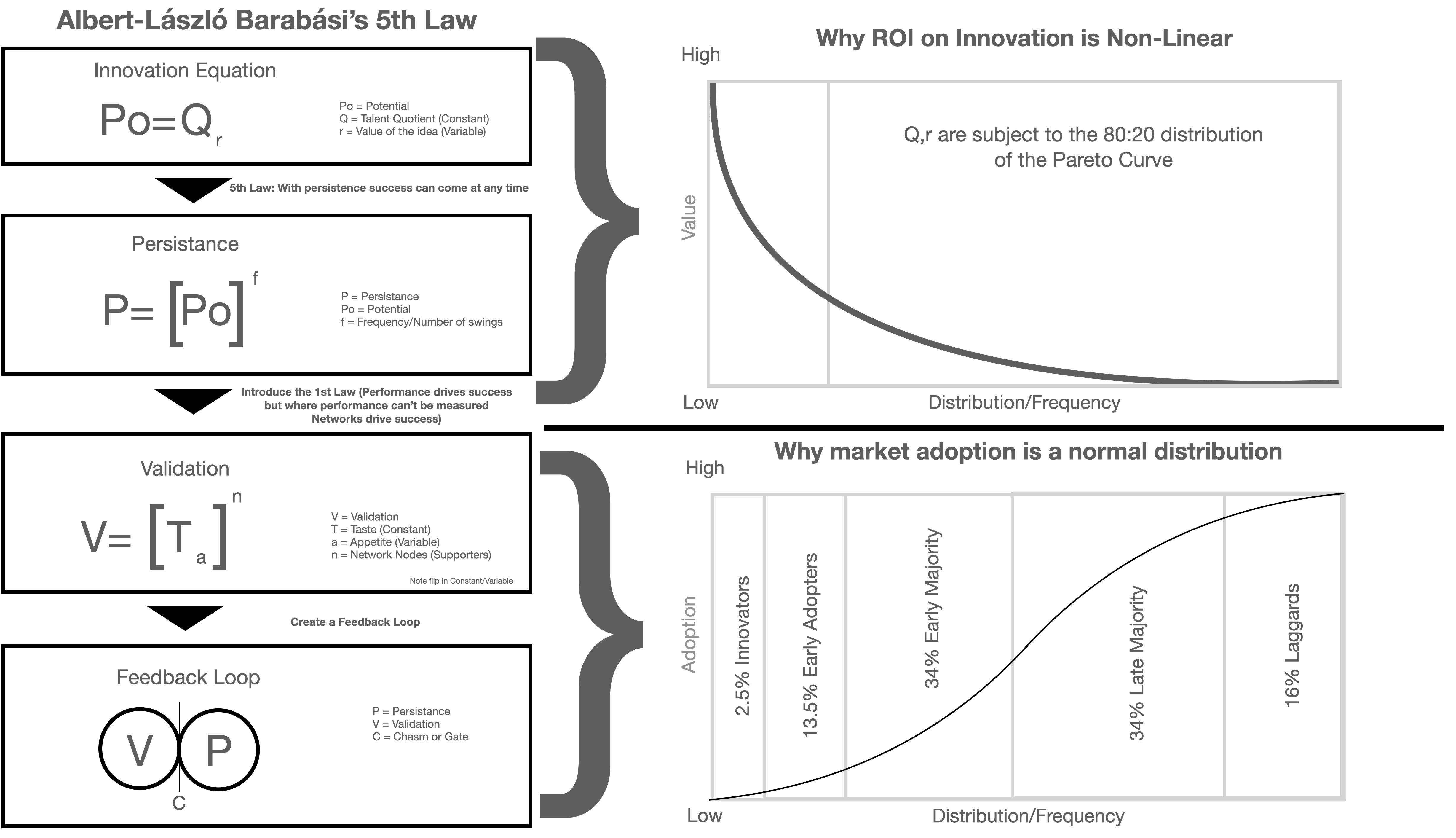
The easiest way to understand the equation is to model the relationship Brian Epstein had with The Beatles.
The Beatles = the potential side of the equation. Their songwriting, records and concert performances equating to the Q constant/r variables
Brian Epstein = the validation side of the equation. By providing the prior success and network connections he openned the doors across the music industry for the group to realise their potential
The role of branding is to create new categories of taste and to increase our appetite for the new 'taste' category
For example: The celebrity or influencer endorsement is basically a declaration: "I've just acquired a taste for..."
This is the social proof: The declaration: "I'm doing it... Why aren't you?" Or, alternatively, "I'm not doing it!... So why are you?
Further investigation of this feedback model reveals 4 distinct market opportunities across the innovation sector
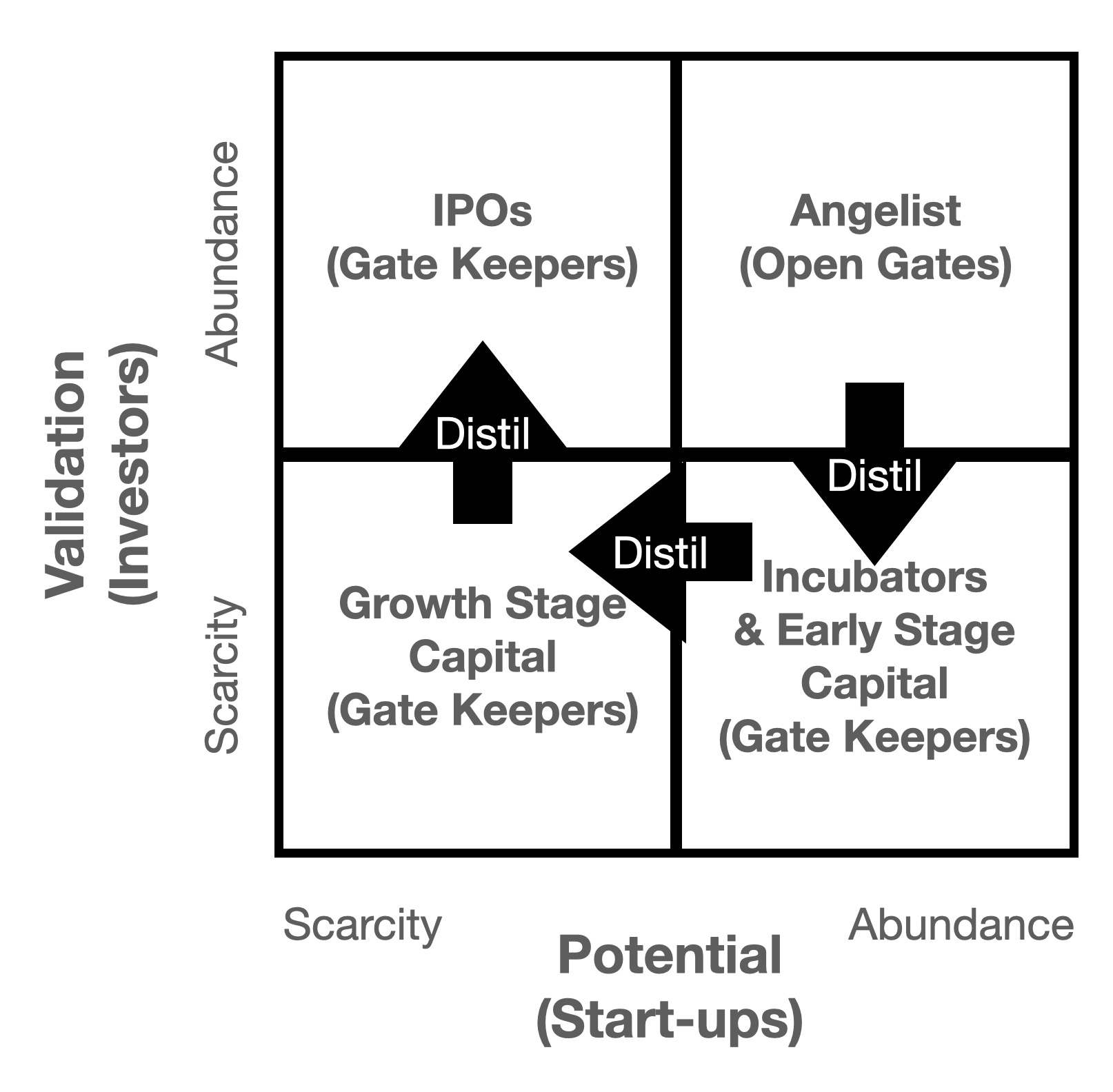
and how aggregation of niche markets creates low unit value mass markets
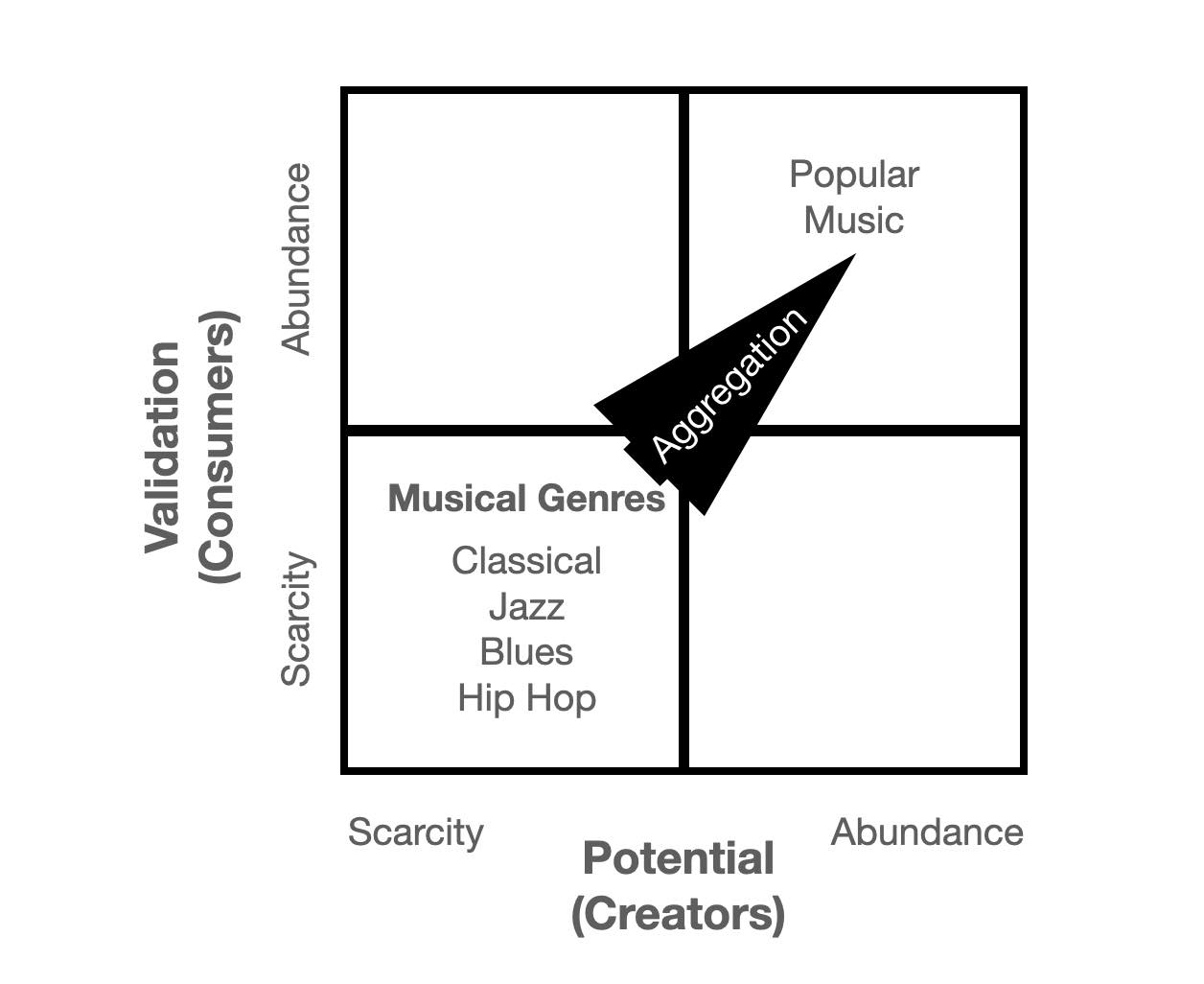
Not only in B2C markets but also B2B markets
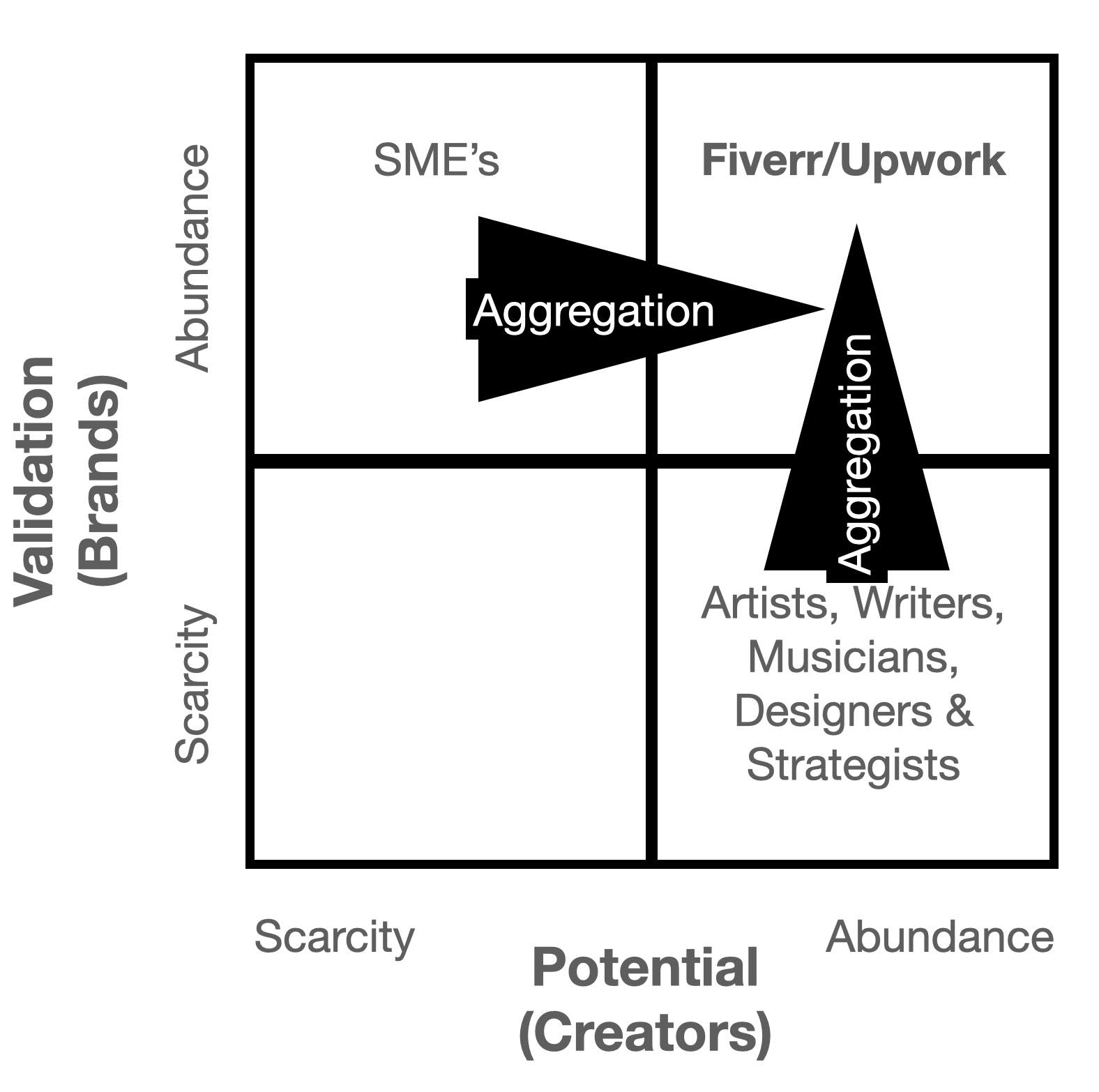
and how distillation of mass markets creates high unit value niche markets
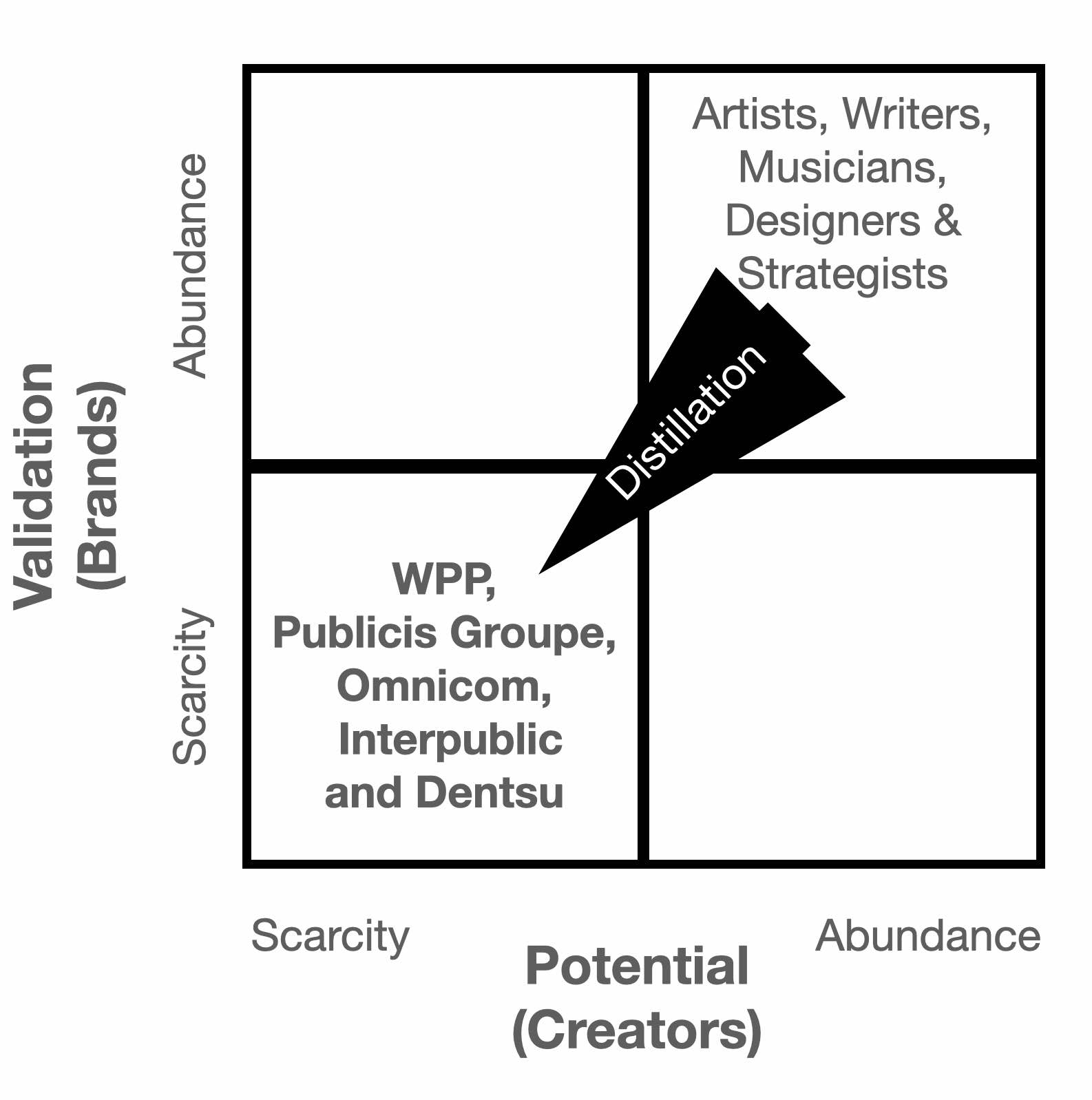
and how these ideas translate readily into understanding the relative value of the media markets (i.e. the relative price paid for eyeballs)
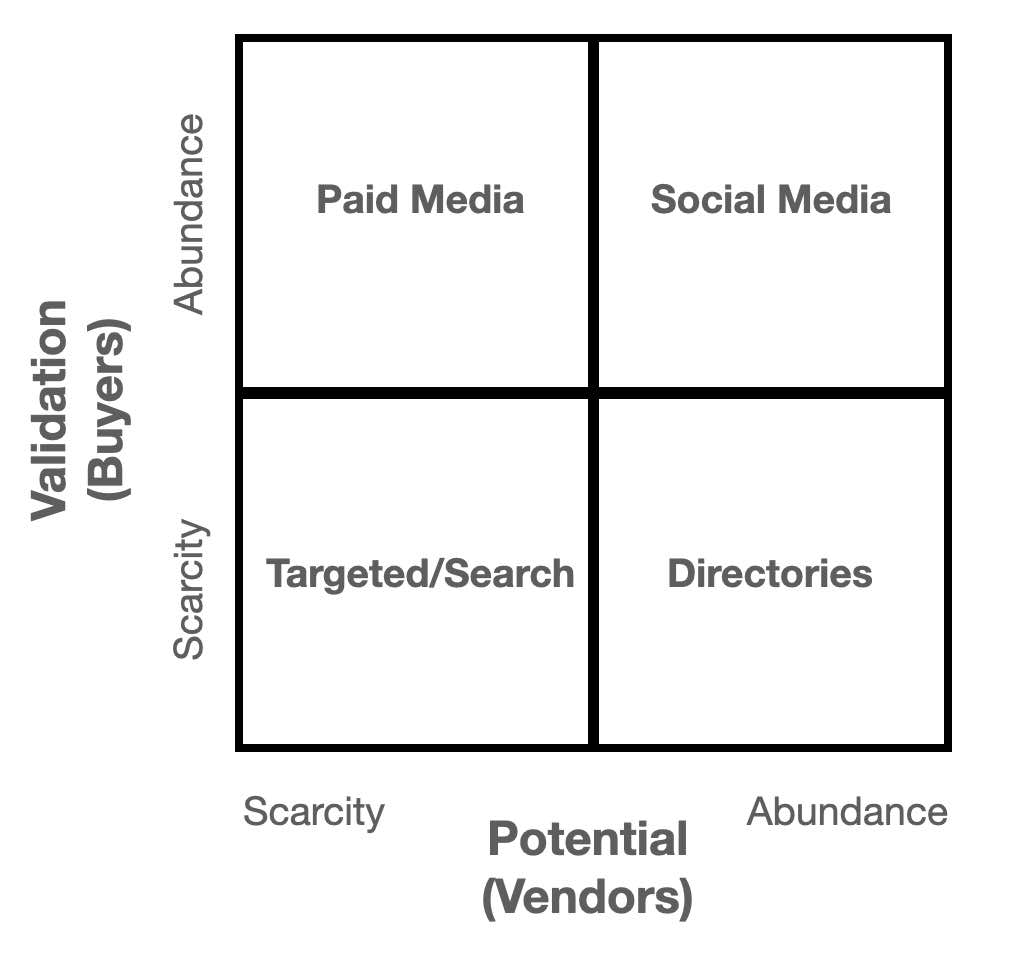
Suggesting the Persistance/Validation Feedback Loop can be reduced to the now familar marketplace feedback loop
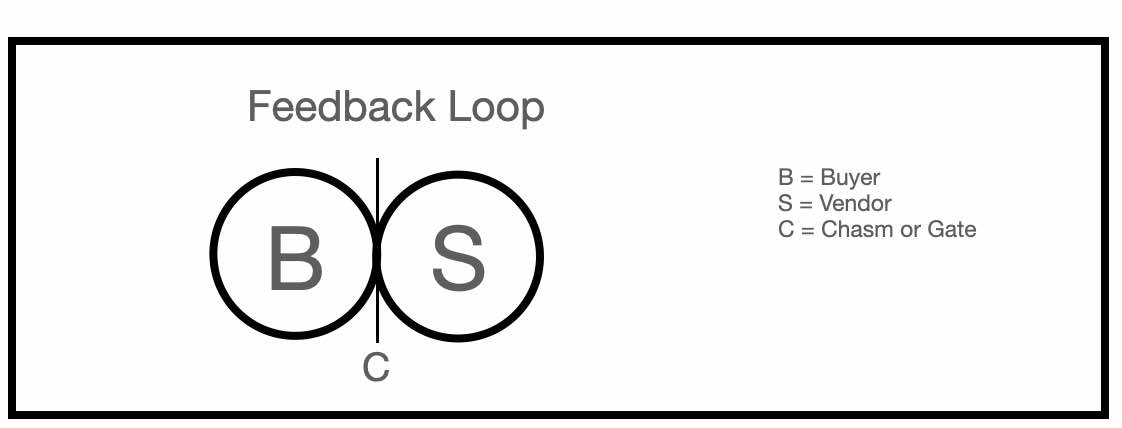
Closing thoughts?
The key to success of the market leaders in the service sector is their ability to create the illusion of scarcity in a market of abundance
Or, more accurately, their collective ability to build a narrative of significantly reducing the risk of failure while delivering a better return on your investment
i.e. Nothing guarantees more success than being a success
Hence the industry wide focus on acquiring creative awards to validate the clients' risk adverse decision making process
The industry awards are best understood as chasms or gates (Which in turn validate the model for measuring success)
This suggests the Agency of the Future will have to redefine/disrupt the collective corporate taste for 'risk and reward' not by introducing a new category.
But by introducing a new way of defining success
Or, put another way, introducing a new chasm / gateway / hurdle / barrier to success
We have seen this before with the rise of social media
e.g. The like or follower count on social media, the App Store or Music Chart List, the 5 star rating systems of review sites that can be easily gamed and in turn ignites abundant growth
and yes, we have previously covered that topic in some detail in the past (Think: Gamification = Garbage)
The closing observation I would like to make however is this:
If the business of branding is about creating new categories of taste and increasing our appetite for the new 'taste' category
Then,
Management consulting is the business of creating the chasms or gates by which we measure potential and validate success
... and,
The Agency of the Future is a list.
You could say that is self-evident given the success of the freelancer marketplaces like Fiverr and Upwork
But in many ways Fiverr is to the future of marketing and advertising as Yahoo! was to be the future of Search and Commerce Directories in 2000
i.e. A primitive solution to the problem of connecting questions with answers and buyers with sellers
The Agency of the Future... or, more acurately the list of the future, will look and operate as much like Fiverr as Google does to Yahoo!
To connect the best with the best. To dominate the head of the long tail. The Agency of the Future will need to operate on a new kind of scorecard. Offer the industry the chance to compete at a new game
A game of Networks and Frequencies
Or, put another way, a radically different way of looking at the equation driving the Innovation Feedback Loop and the search for talent and ideas to fuel the creative engine rooms of the digital economy
... and that means revisiting some old ideas about how networks function
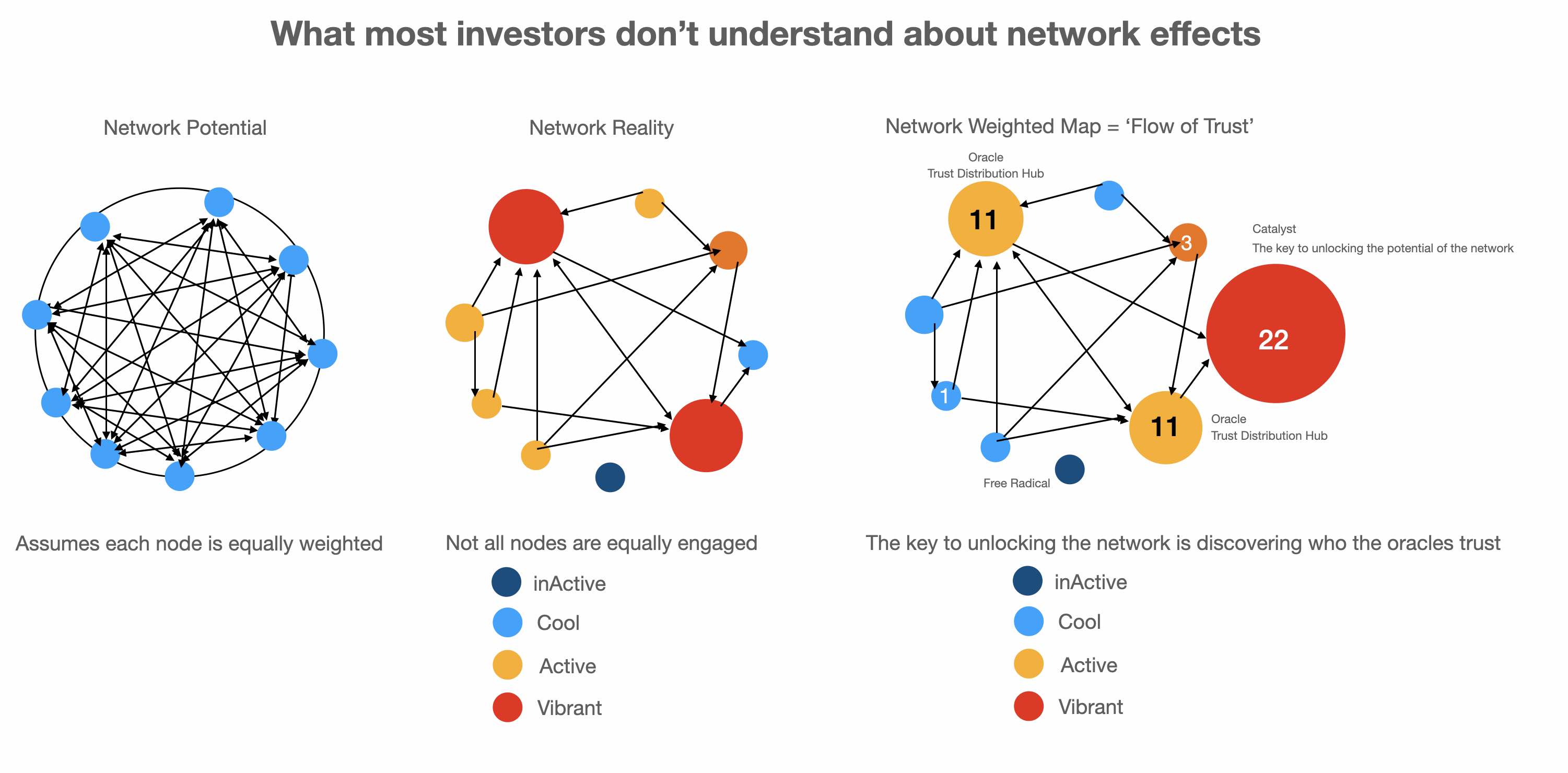
... and old concepts about how networks are in constant flux. Constantly reshaped by contagion
... and ultimately how the focus should be on mapping the catalyst that triggers the movement rather than mapping the connections

Because the game of Networks, Talent and Ideas is a game of attraction
Networks are attracted to talent and ideas
Talent and Ideas are drawn to networks of higher value
Part 2
Now I want to introduce some old ideas about consulting services business models
The first is the map of the client's business process maturity model
What I have previously described elsewhere as the 7 Stages and the 7 Chasms of the business life cycle

and how the optimal service opportunities are spead across the cycle
with the most lucrative opportunities being in the Mergers and Acquisitions/New Product launch stage of the cycle
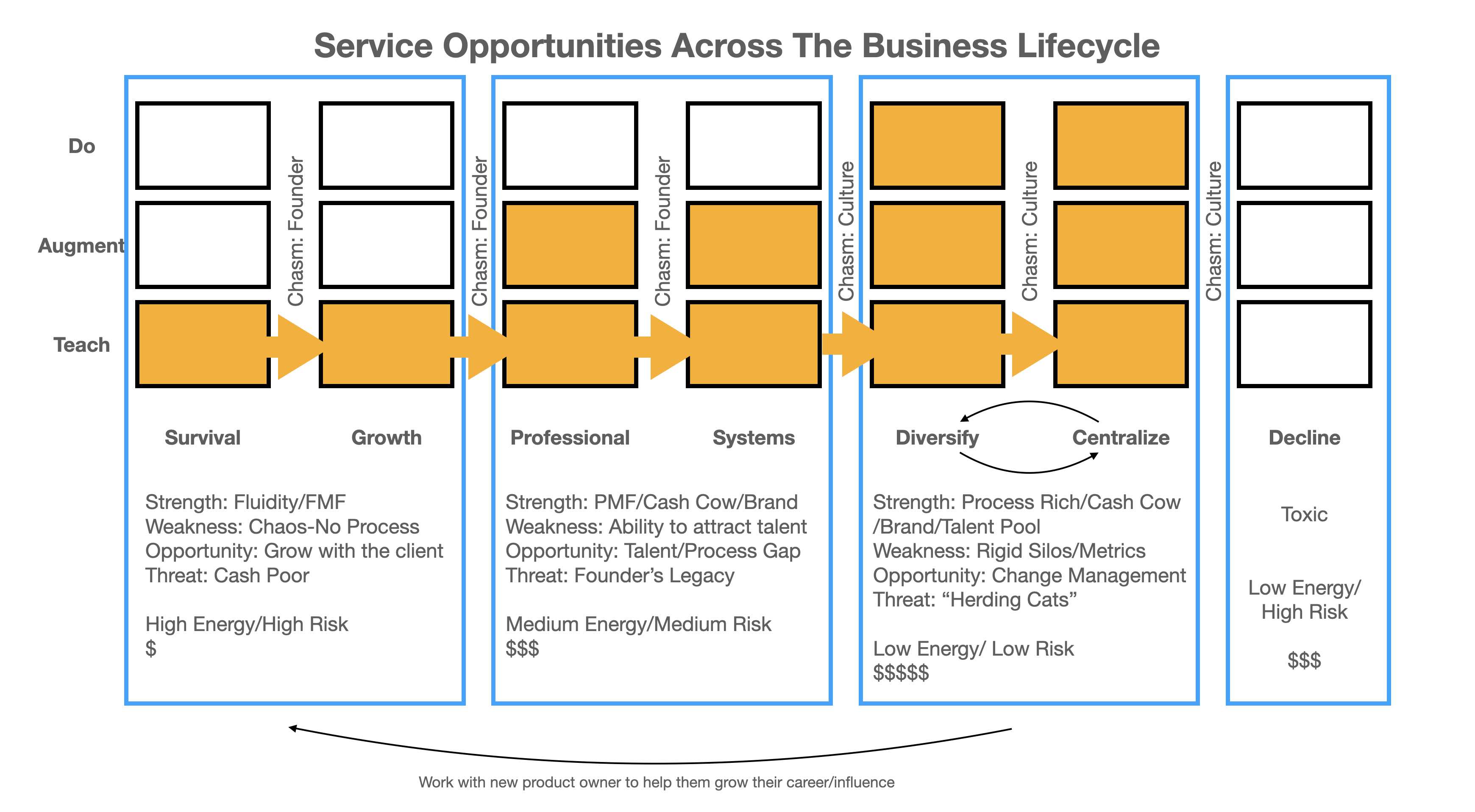
and how the Freelancer vs Trusted Advisor decision tree has evolved to service the limitations and the opportunities of the client's business lifecycle stage
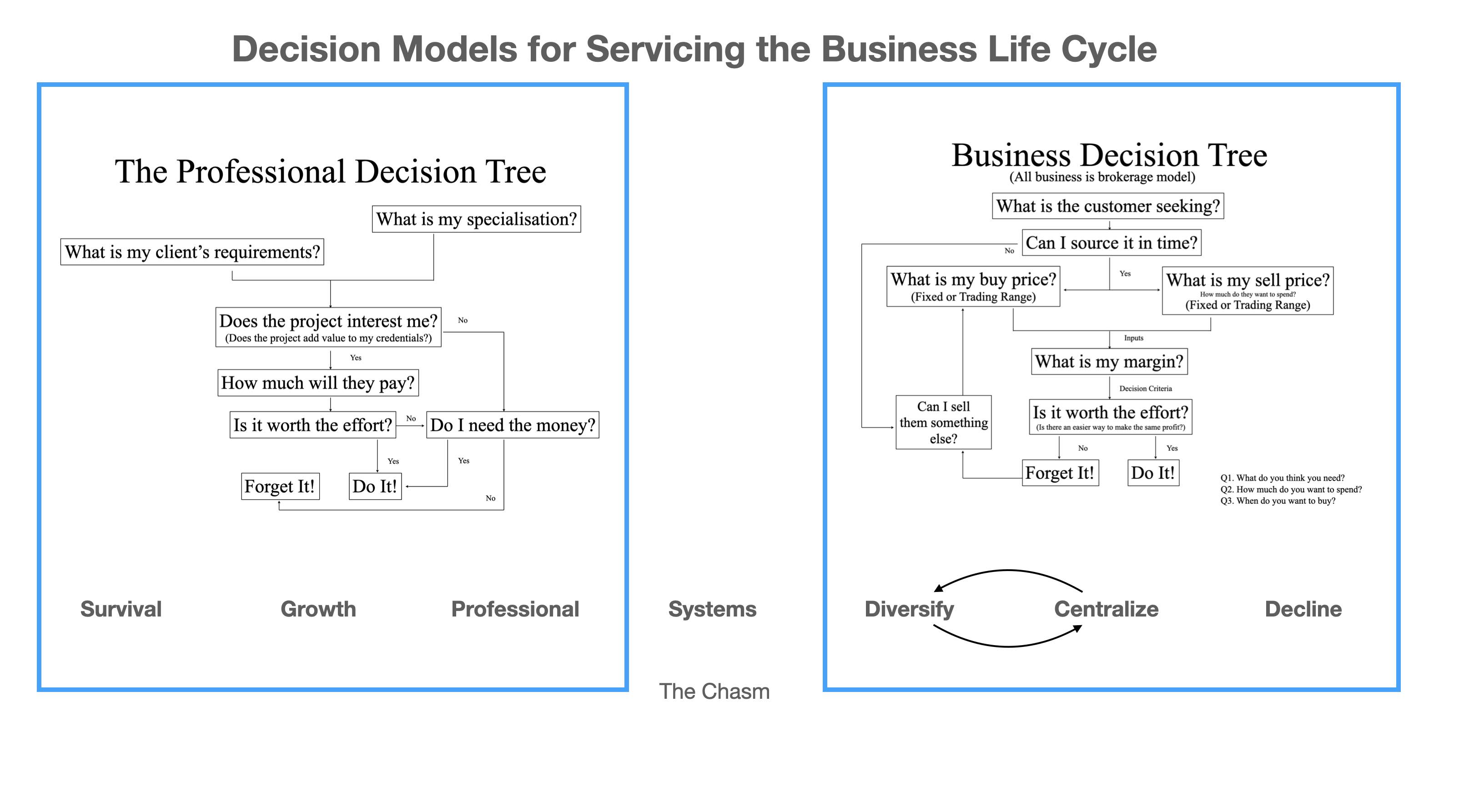
and how this spread reflects the emergence of the digital marketplaces for freelance creative talent servicing the early stages of the lifecycle
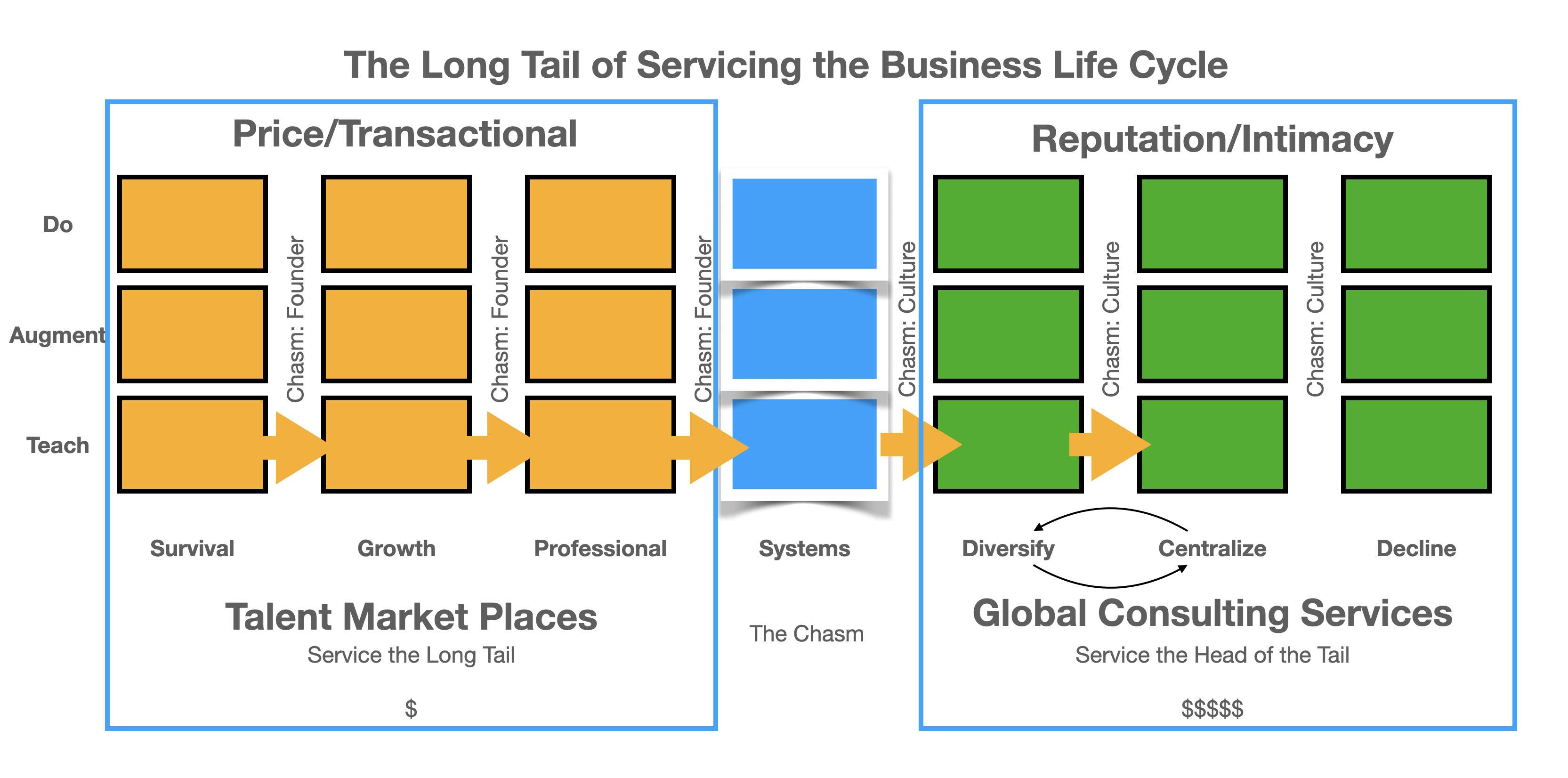
and the impact the lifecycle limitations and the opportunities on the mapping of organisational leverage (ie Ratio of partners to associates to juniors) across the consulting services sector
Which leads us to reconsider the consulting services matrix
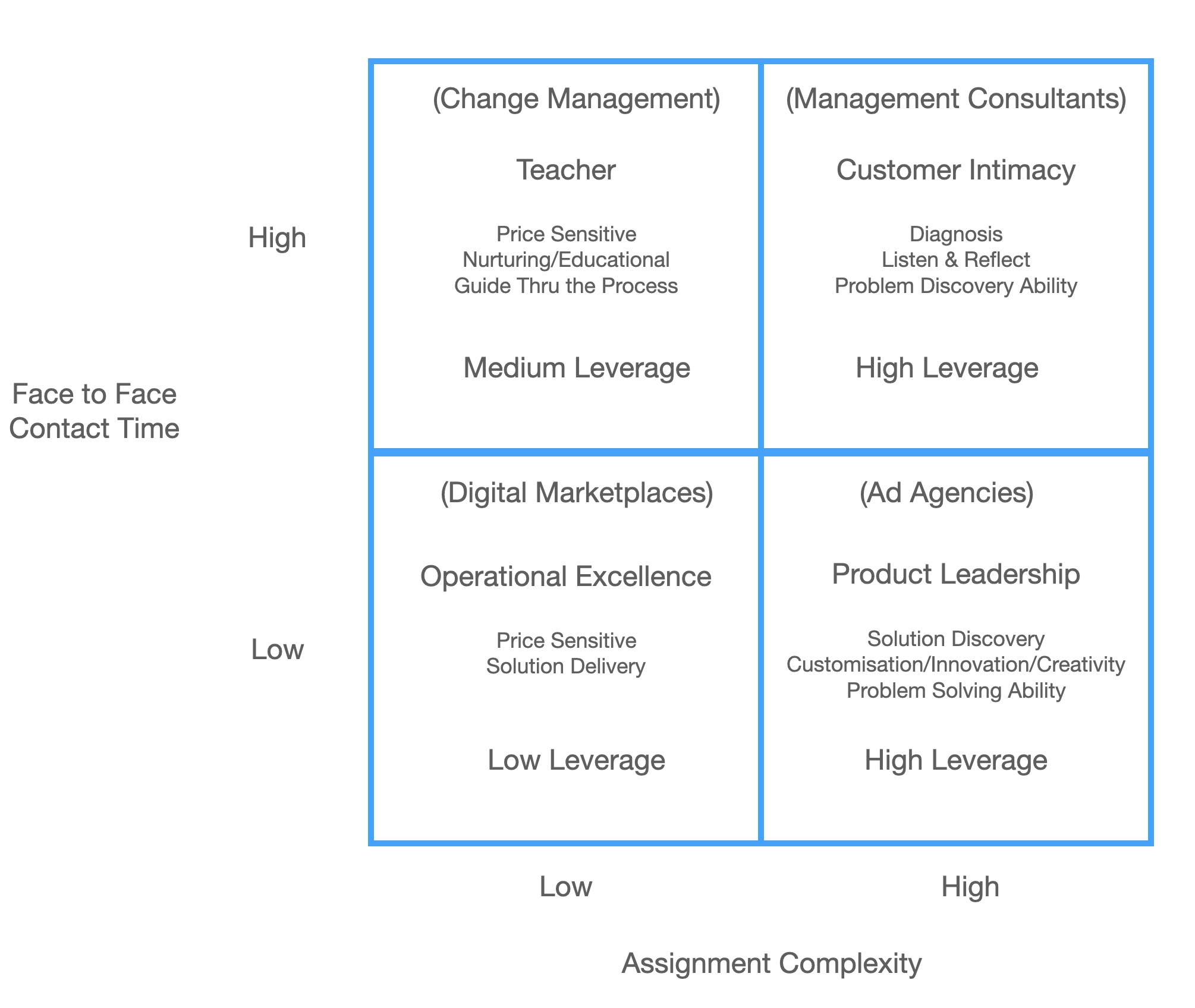
and how this map translates into the 80/16/4 spread of Partners, Associates and Junior Associates across the traditional full service agency model (Be it advertising, systems integration, wealth management, insurance brokerage or management consulting
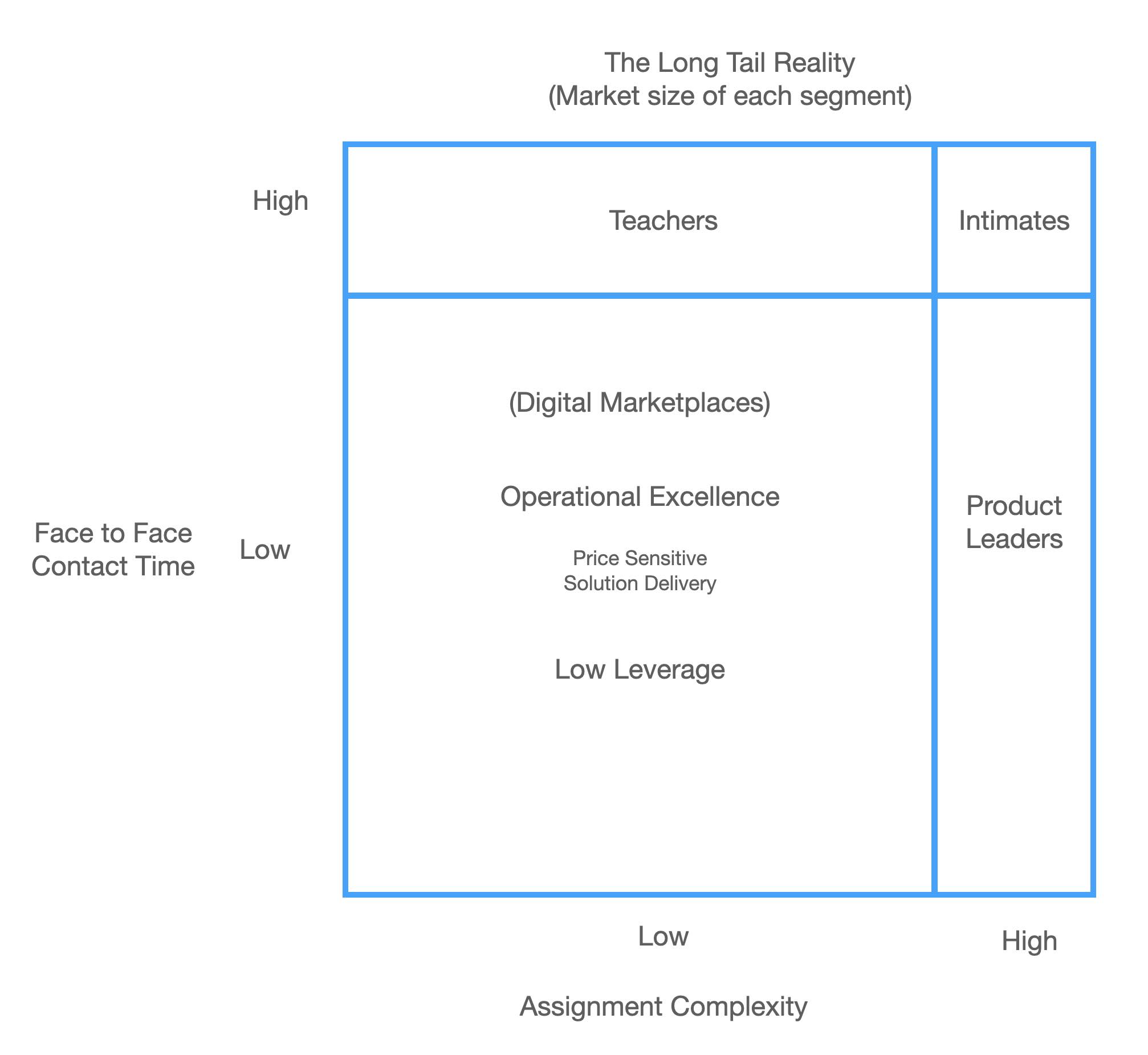
and mirrors the scarcity and abundance ratios of the creative marketplaces described above in part 1
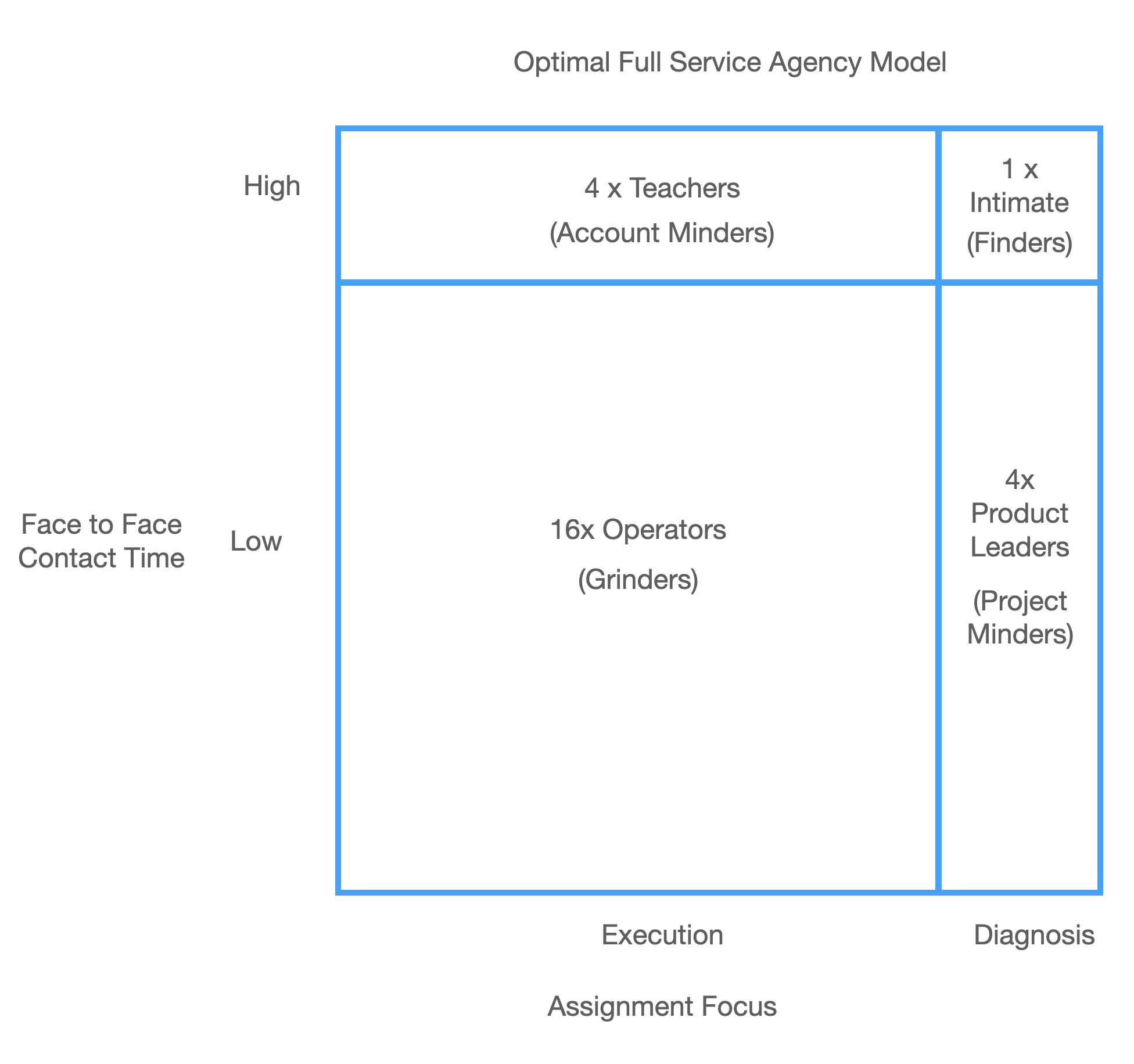
The key difference being the intimates (ie Finders) within the consulting services sector really are scarce resources
They are the rainmakers. The trusted partners. The external 'Catalysts' who's impact on the influential 'Oracles' within the client's organisation cannot be underestimated

Meanwhile these organisational ratios reflect the reality of optimal talent mix when assembling teams of smart people tasked with changing the story and/or changing the game
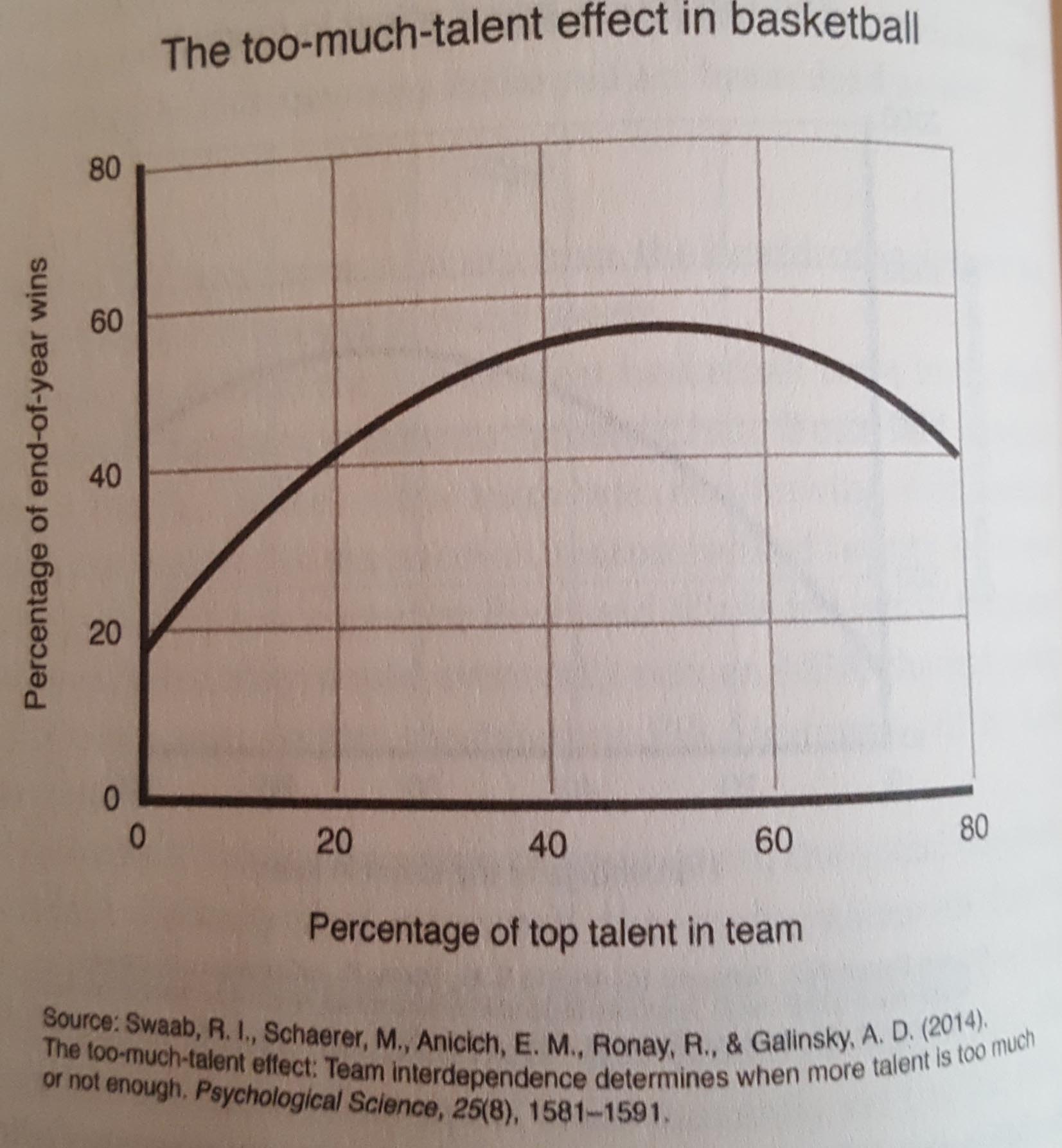
Suggesting there are three distinct digital marketplaces for talent
- Assuming the roles of the Finders and Minders can be reduced to a digital experience or more accurately a digital exchange

... this in turn brings us full circle and to the obvious question:
Can you assemble a network of Brian Epsteins?
Or, more accurately, Can you assemble a digital marketplace for Brian Epsteins?
and, assuming you could, what would be the hook that would entice them to join in and play the game?
This then is the riddle you need to solve if you are to deliver to the world the agency of the future
Have a think about that... at least until next time...
Part 3
Creativity is emergent. AI has the ability to unlock endless combinations in a fraction of the time
So there is no question AI can and is creative.
The question mark around AI is one of taste
Does it have the ability, the judgement to make the right choice? The ability to pick and choose what is best from its infinte collection of options
Does it have taste?
Or, will it it render the whole idea of having good and bad taste obsolete?
Let me show you what I mean
Imagine an AI scriptwriting engine combining the recent musical flop CATS with the Seven Samurai / Magnificent Seven, or War of the Worlds / Independence Day or The Body Snatchers / Alien or Yojimbo / A fist full of dollars
The product is easy to imagine
But would it be worth making?
Would it be worth watching?
Today, given the high cost of production, the answer is probably no
Tomorrow, or at least in the future, the cost of production will be near zero (largely thanks to the potential of AI to manufacture endless digital simulacra)
But still the question remains. Even at zero cost would A Magnificent Seven of singing CATS saving a mexican town from (dare I suggest) a plague of RATS be worth making?
Would it be in good taste?
Indeed would good or bad taste exist in a world of AI fuelled digital simulacra?
In reality AI could, and most probably will, deliver an infinite variety of digital content to an audience of infinite tastes
For the auteur and audience alike movie making will become as easy (or complex) as making music on a Fairlight musical instrument… the opportunity to never watch the same movie twice… no matter how much you enjoy watching repeats
Today taste is reductive. It is shaped by our network of connections. Tomorrow taste may well be emergent.
Or indeed both as networks of AI compete to deliver emergent new tastes
But step back and evaluate this scenario. Are we talking about a future powered by Artificial Intelligence, Augmented Intelligence, Artificial Creativity or Augmented Creativity?
What we have is an abundance of solutions… answers
What we don’t have with this scenario is an abundance of questions
What is lacking from the equation is the ability to listen, reflect and diagnose
What I would call problem discovery ability
And that leads me to suspect the agency of the future will actually be a network of questions or more accurately a network of probabilities
Which brings us back to the original premise behind the excapite blog: In a world full of answers you begin by asking the right question
Questions like
Where are you? and, where did you come from and how did you get here? and What’s changed and how, who or why has it changed?
Diagnostic questions. 4 levels deep
Can AI - endless combinatorial, and yes, the questions are endless combinatorial - deliver this deep therapy that is at the heart of business strategy?
Can AI get to the root of the problem… before formulating a solution?
and can it test its solution against the problem it has set itself
Does it have experience? Does it have good taste?
This is the deeper question
If the answer is yes then the agency of the future is AI and the battle ground is who owns and profits from renting out the algorithms that power this new way of thinking
If the answer is no then the agency of the future is a network of (virtual?) therapists - rainmakers - who frame the creative challenge for the AI to solve and monitor the output
In the absence of intelligence they are the arbiters of taste
The 24/7 network of decision points
Therapist and tastemaker (Validator)
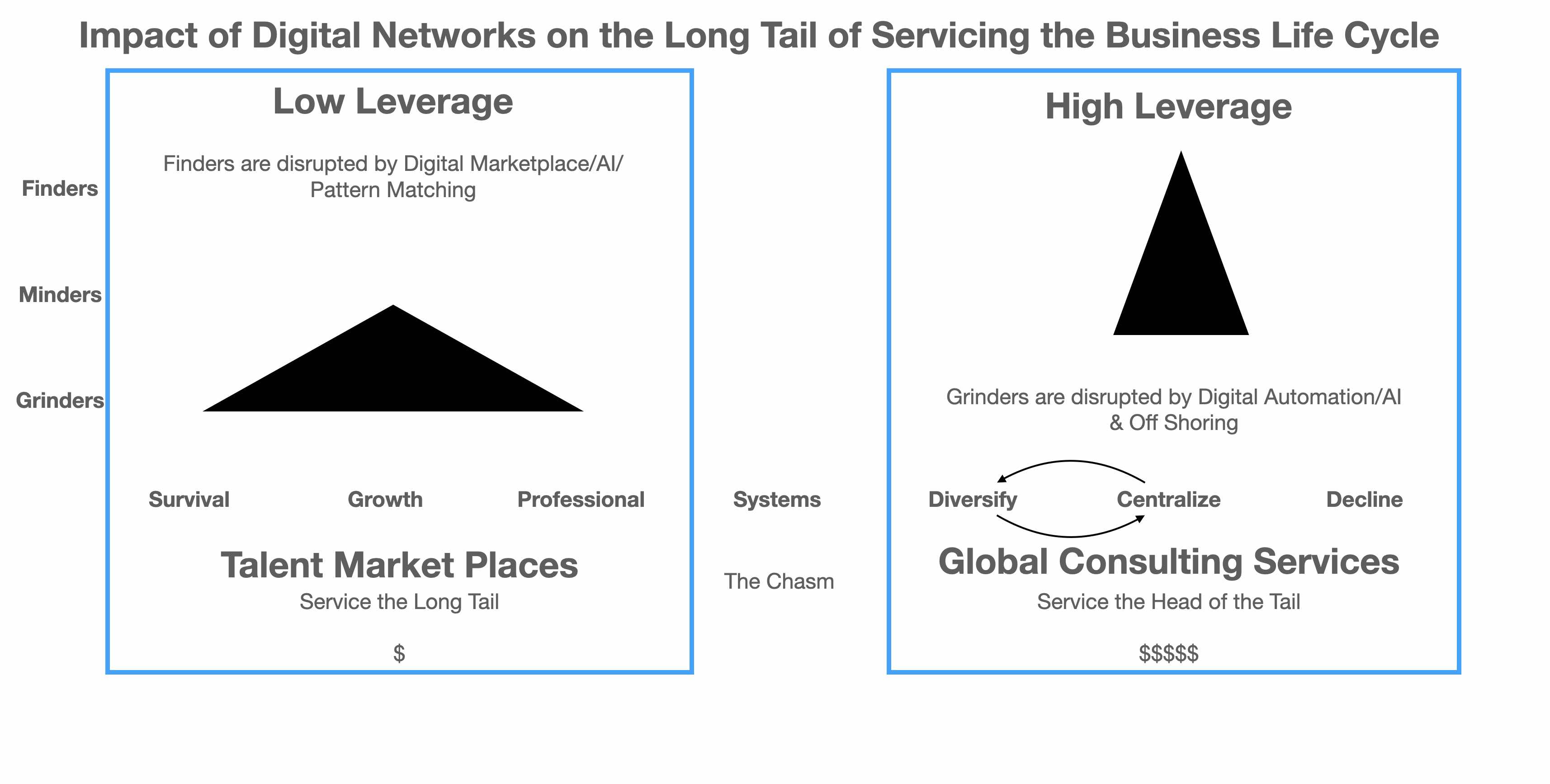
Suggesting the hook, or more accurately the game, for participating in a marketplace at the head of the tail is one of measuring both the quality of the original questions and the ability to rate (Think: Quantify/Taste) the solution